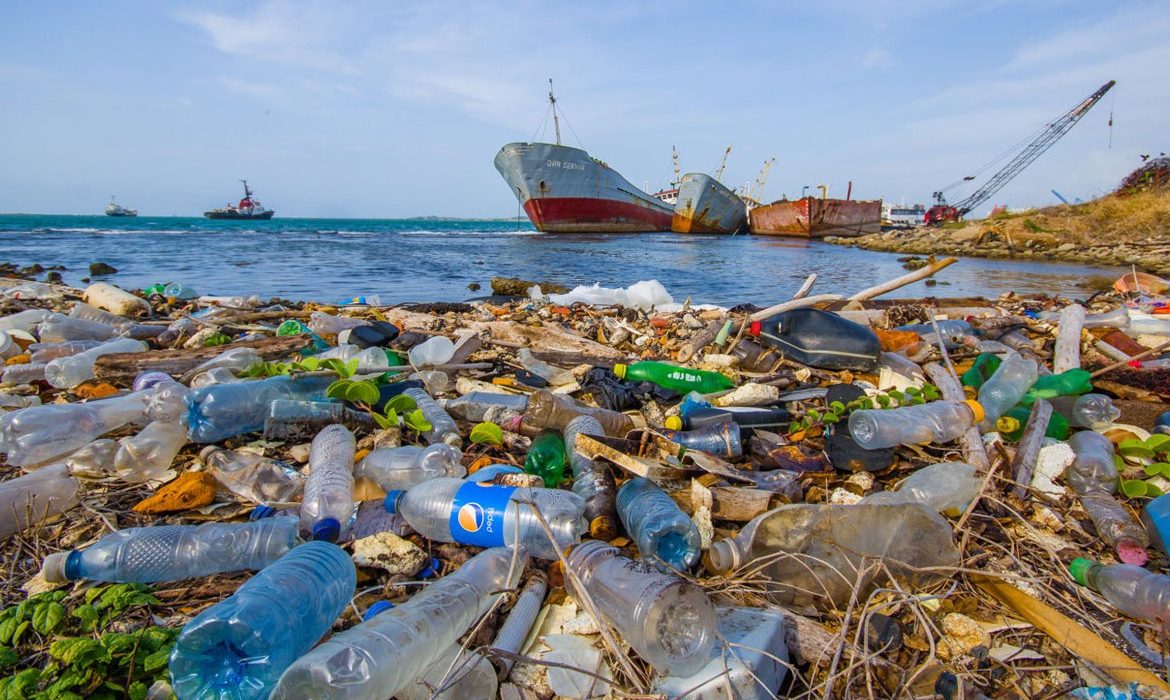A revolutionary study by the Institut de Ciències del Mar (ICM-CSIC) and the University of Cadiz has made it possible to detect marine trash from space. This study, published lately in the journal Nature Communications, shows how satellites can estimate the amount of litter, primarily plastic, on the sea surface a feat long thought impossible due to the sparse concentration of waste.
Advances in Satellite Technology:
Marine litter’s low density historically made it difficult to detect from orbit. However, introducing supercomputers and powerful search algorithms has altered this situation. The research team used information from the European Copernicus Sentinel-2 satellite to analyze a six-year record of observations in the Mediterranean Sea. This extensive investigation examined 300,000 photos captured every three days at a magnification of 10 meters.
Application of Supercomputers:
Supercomputers were crucial in processing the massive amount of data needed for this study. The processing capability enabled researchers to use advanced algorithms to detect patterns and abnormalities associated with marine garbage. These powerful algorithms, which detect minute variations in photos, were critical in determining the presence of plastics, among other items.
Copernicus Sentinel 2 Satellite:
The Copernicus Sentinel-2 satellite, which is an element of the European Union’s satellite Earth observation program, is outfitted with multi-spectral imaging equipment capable of producing high-resolution photographs. Although not specially designed to identify marine litter, the sensors have demonstrated surprising adaptability in identifying plastic waste, thanks to the researchers’ advanced analytical approaches.
Detecting Litter Aggregations:
The investigation found a significant collection of litter beneath floating structures referred to as ‘windrows.’ These windrows, generated by a combination of water currents and the impact of wind on the ocean’s surface. It can be several kilometers long. Although Sentinel-2’s sensors weren’t originally meant to detect litter, they were capable of identifying plastic and mapping the most polluted parts of the Mediterranean.
Creation of Windrows:
Windrows arise when ocean currents merge, resulting in lines of drifting debris across the sea surface. Such structures can be multiple meters broad and span kilometers, making them apparent from space. The study discovered that such windrows are mostly made up of plastic waste, which tends to build due to their buoyant properties and the ocean’s kinetic dynamics.
Tracking Pollution and Analyzing Debris Transportation:
According to the study’s findings, floating plastic in the Mediterranean Sea might cover around 95 square kilometers between 2015 and 2021, which is equal to approximately 7,500 football fields. This geographical representation not only reveals the principal entry places for trash from the mainland but also helps us understand how garbage moves across the ocean.
Key Entryways for Marine Debris:
The study identified numerous main entrance locations for marine litter, mainly along highly populated coastlines and major waterways. These places are the primary causes of plastic pollution, which takes place by rivers and drainage into the ocean. Understanding these entrance locations is critical for creating targeted approaches to reducing marine garbage.
Transport Mechanisms:
Marine litter carried by an array of ocean currents, winds, and waves. The study discovered that plastic trash frequently travels long distances from its site of origin, owing to the intricate interaction of various elements. This migration not only distributes pollution over large areas but also complicates cleanup operations.
The Problem of Locating Marine Debris:
Manuel Arias of ICM-CSIC, the joint director of the study, compared the task of locating litter aggregations to “taking a look for pins in a haystack,” citing the need for large litter accumulation and low wind dispersion. Andrés Cózar of the University of Cádiz, another co-director, emphasized the hitherto unknown significance of these paths in marine debris.
Overcoming Detection Challenges:
The biggest issue in identifying marine debris from space is the low concentration of trash on the ocean’s surface. The study’s effectiveness was dependent on the capacity to recognize big clumps of litter that grow under particular circumstances, such as low winds and current convergence. High-resolution satellite photos and modern processing techniques were critical in overcoming these obstacles.
Influence Factors in Marine Debris Accumulation:
The study identified human density, topography, and patterns of rainfall as major influences on marine litter buildup. Desert places, for example, contribute little to marine litter, but areas with substantial rainfall see greater trash collection as a result of runoff from torrential rain. Most continental-origin litter stays within fifteen kilometers of the coast before returning to land.
Demographic Density and Urbanization:
Large populations and urbanization contribute significantly to marine trash. Coastal towns and cities generate significant amounts of plastic debris, most of which eventually ends up in the ocean. Effective waste management procedures and public awareness efforts are required to address this issue.
Effects of Rainfall:
Rainfall, particularly strong downpours, has the potential to greatly increase the quantity of litter reaching the seawater. Drainage from urban areas sends plastic trash into streams and rivers, where it is transported to the sea. Implementing measures to prevent runoff pollution, including better drainage systems and environmentally friendly structures, can help to alleviate this issue.
Joint Initiatives:
This groundbreaking research was a joint venture involving several organizations, including the European Space Agency (ESA), ARGANS France, Universitat Politècnica de Catalunya (Spain), Consiglio Nazionale delle Ricerche (ISMAR-CNR, Italy), Technical University of Crete (Greece), ARGANS Ltd. (UK), AIRBUS Defence and Space (France), the European Commission’s Joint Research Centre (JRC), The Ocean Cleanup (The Netherlands), and ACRI-ST.
Conclusion:
The capacity to track marine debris from orbit is a huge step forward in our fight against marine pollution. This study not only demonstrates the potential of present satellite technology. But also emphasizes the need for future developments in order to better comprehend the transportation and distribution of marine litter. Improving our monitoring capacities will help us better inform policies. And measures to conserve our seas and the unique ecosystems they support.

